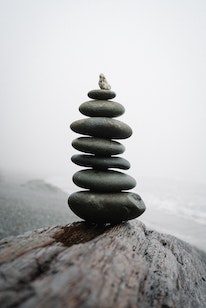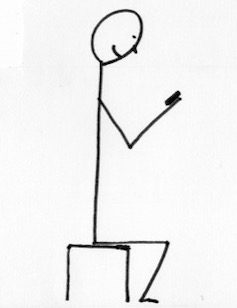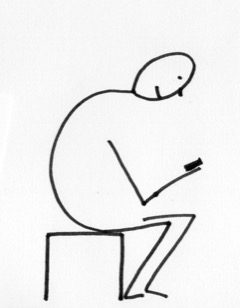Now in existence for well over a century, the Alexander Technique is known for helping to solve back pain and other posture-related problems. If you learn it properly by having lessons, it can actually do much more, as the Technique is a profound learning process with practical relevance to all areas of life.
The Alexander Technique is a method for learning to change habits, minimising effort and avoiding strain both in everyday life and whilst performing specialised activities.
So, can it support our wellbeing when we’re using technology? Yes it can, and here’s how.
However, you need to know that the Technique is not a quick fix. Because Alexander Technique works in quite subtle ways with the body as well as with our thinking, the traditional way to learn it is through individual, in-person lessons with a qualified teacher, trained to use their hands skilfully to guide you, along with verbal explanations. This is the ideal but, if it isn’t available, there are nevertheless some useful things you can learn in groups or online.
Now, let’s try something practical…
Introductory Alexander Technique Exercise
Start by simply noticing your body. In particular, notice how you are sitting, standing or moving (your ‘posture’), and try to be aware of how much effort you are using.
We need a certain amount of work going on in our muscles in order to be able to stand, sit up, hold a pen or even talk! The problem is that, for various reasons, we often use much more tension and effort than we need. This is wasteful of energy and can be tiring, and occasionally it can lead to pain. So, even before we approach the use of technology, something that can help is to observe your posture and tension levels at regular intervals.
Ask yourself what is the minimum amount of effort actually needed to perform whatever action you are doing now? Are you, for example, tightening your shoulders or gripping harder than necessary when you pick up a kettle, cut vegetables or write a shopping list?
After some practice noticing your body and the effort to maintain your posture, you can try to extend this to situations where you are using a device.
Alexander Technique Exercise for Device Use
As above, start by noticing your body as you use your device.
When using a phone, tablet or computer, the first two points I consider are these:
- Am I sitting or standing in a well-balanced way in the first place?
- When I start using the device, can I incorporate it into my own position of balance, or am I taking myself out of balance in order to interact with it?
Balanced posture
Look around you in any cafe or on public transport where people are using screens, and invariably you will see backs slouched, heads dropped down in front, the body as a whole sometimes twisted. Well, the average head weighs around 5 kgs, and when it’s properly balanced on our spines we can cope with this easily enough – but if the head is poked forwards and held there for significant periods of time, the weight load on the neck and other muscles increases dramatically.
When the body is well balanced over its base – on the feet in standing, the sitting bones or other surface areas when sitting – much less effort is needed to hold ourselves up than if we’re out of balance. To avoid fatigue and pain, what we need to do first is practise sitting and standing in an efficient, balanced way without actually doing anything else. Then, as we get better at simply sitting, we can begin to work on how to accommodate the screen or keyboard into our good posture, instead of accommodating ourselves to the screen – wherever we may have put it, in our lap or on a table. An Alexander Technique teacher can help with all this.



In the meantime, it’s worth looking at standard health & safety advice for work station set-up. Good advice for using a laptop is to use it at a desk and connect to a separate screen with the top of the screen level with your eyes. For a phone, I always recommend holding it up to your face instead of dropping your head down towards your lap. With a tablet, try to position it so that you can read it without having to lower your whole head; but as it’s heavier than a phone you may want to rest it on something solid – perhaps experimenting with cushions or books to bring it up to the right level. Whatever the device, remember to consider the angle of the screen as well as its position.
Beyond posture
Considering physical posture is a start, but many people experience other benefits too. Learning to use the body with greater ease and less strain can contribute to a general sense of wellbeing; and some people find (for example) that their confidence improves, breathing becomes easier, or their speaking voice develops more resonance.
Learning more about Alexander Technique
This article offers only a brief introduction to the technique and how it can help support digital wellbeing.
The Alexander Technique uses a number of practices and principles to improve posture and change unhelpful habits. I explained one of them in a blog post, ‘Constructive rest, or semi-supine’.
To find out more about the Alexander Technique, and where you can find in-person lessons, the following links offer a good starting point: https://alexandertechnique.co.uk and https://alexandertechnique.com
It’s useful to know there is more than one way to put it into practice, and different Alexander teachers may take different approaches. That said, all Alexander teachers work with the same set of principles, and what we are all aiming for is lasting benefits resulting from the learning process.